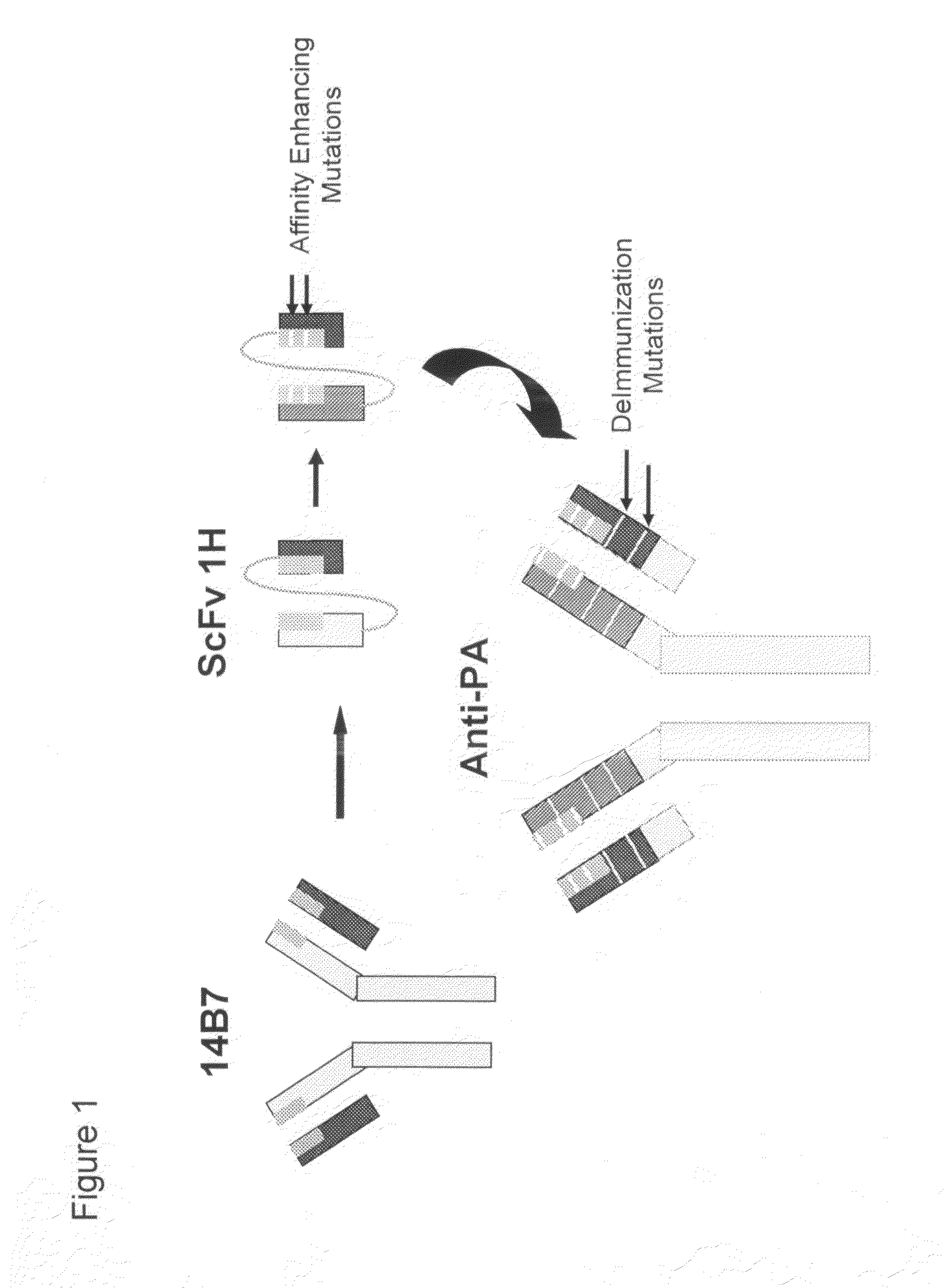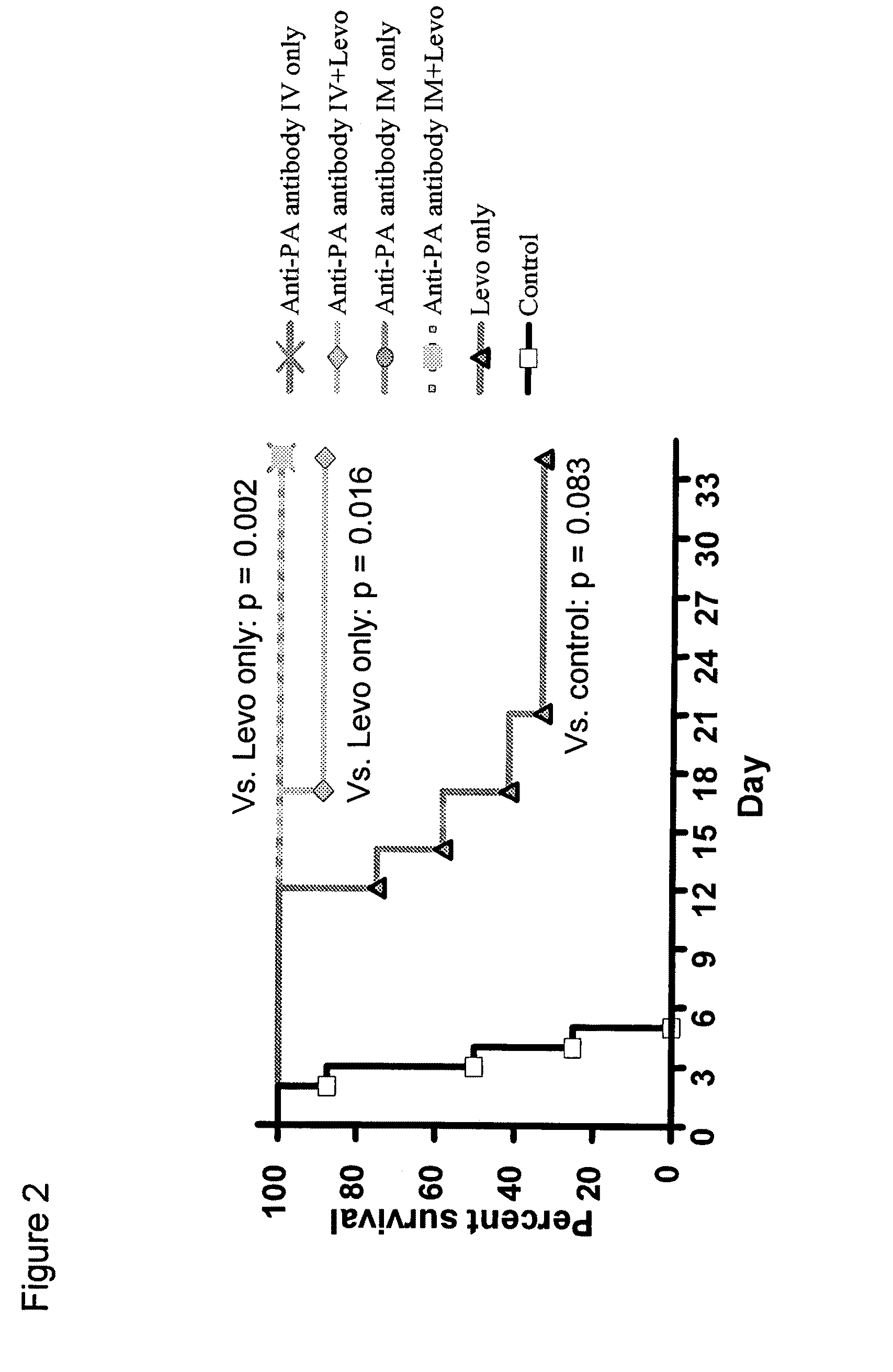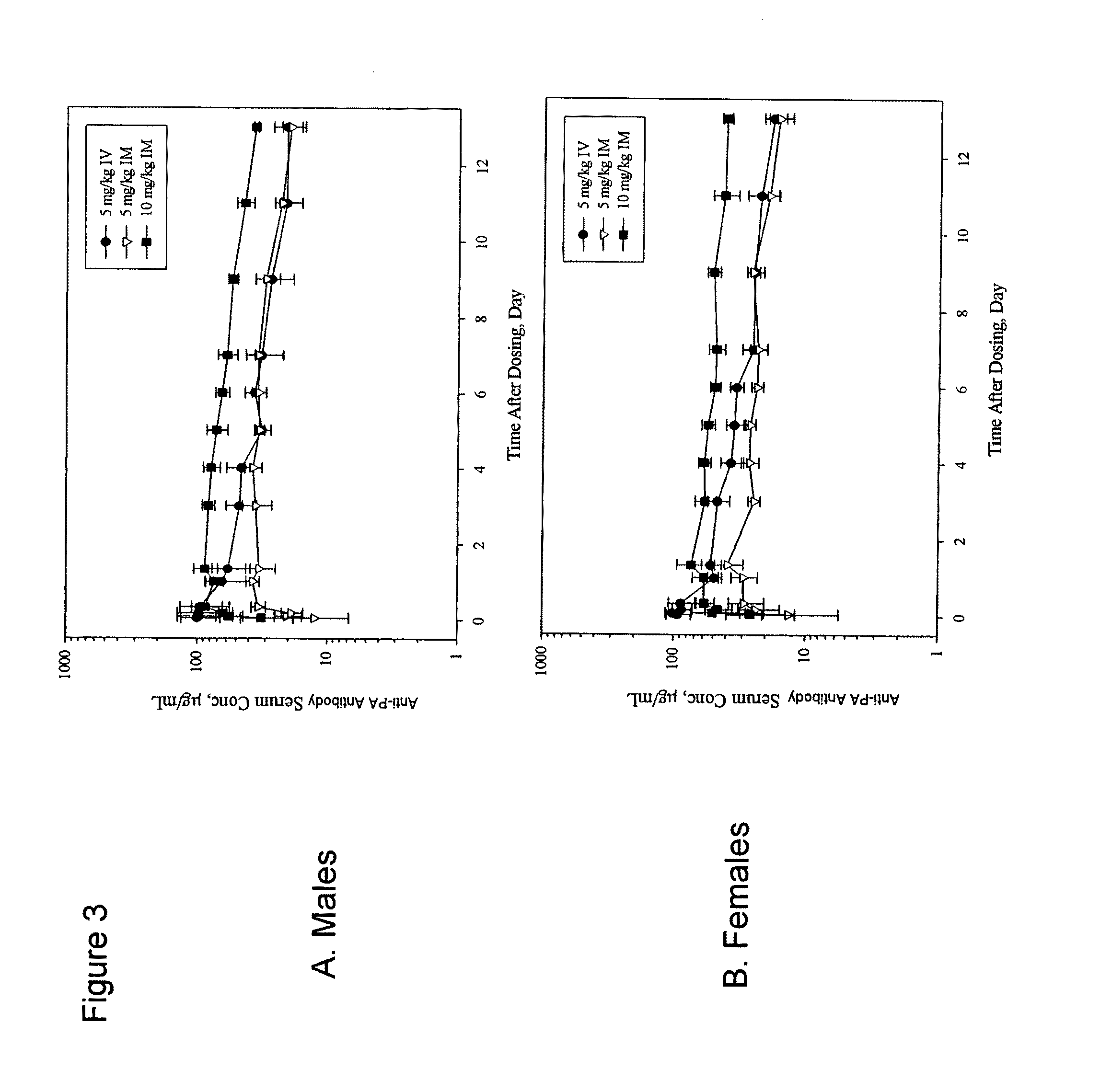Antibodies that bind B. anthracis exotoxin, formulations thereof, and methods of use
an anthracis exotoxin and anti-anthracis exotoxin technology, applied in the field of anti-anthracis exotoxin, formulations thereof, and methods of use, can solve the problems of ineffective antibiotic treatment, inability to fully protect the patient, so as to prevent the development of inhalation anthrax, and prevent the effect of inhalation anthrax
- Summary
- Abstract
- Description
- Claims
- Application Information
AI Technical Summary
Benefits of technology
Problems solved by technology
Method used
Image
Examples
example 1
Generation of the High-Affinity Anti-Protective Antigen Monoclonal Antibody
[0155]A deimmunized anti-PA MAb, a recombinant human immunoglobulin (IgG1), is a basic four chain glycosylated protein consisting of two light chains and two glycosylated heavy chains produced from the NSO mammalian cell culture. The molecular weight of the anti-PA antibody is 148.6 kDa, as determined by MALDI-TOF, and it has an isoelectric point of 9.6. Amino Acid Analysis (AA) of the anti-PA antibody agrees with the composition predicted from DNA sequencing and codon analysis. N-terminal sequencing of the heavy and light chains, which yielded 35 residues including the first complementarity determining region (CDR) of both chains, also agrees with the predicted amino acid sequence. Additional characterizations of reference standard material included peptide mapping, disulfide linkage analysis and carbohydrate analysis.
[0156]The anti-PA antibody is an affinity-enhanced deimmunized MAb to Protective Antigen (P...
example 2
Rabbit Spore Challenge Model Post-Exposure with or without Antibiotics
[0159]The rabbit spore challenge model was utilized to demonstrate that post-exposure administration of anti-PA leads to increased survival above that of levofloxacin (a fluoroquinolone antibiotic similar to ciprofloxacin but better-tolerated by rabbits) after an aerosolized B. anthracis (Ames strain) spore challenge. Levofloxacin is currently approved for preventing the development of inhalation anthrax. The IM dose selected (20 mg / rabbit) was twice that of the IV dose (10 mg / rabbit) of anti-PA to achieve comparable blood levels (Mohamed et al. 2005).
Aerosol Procedures:
[0160]Aqueous suspensions of B. anthracis (Ames strain) spores (MREF Lot B24) were aerosolized by a 3-jet Collison nebulizer and delivered to rabbits via a muzzle-only inhalation system. The target inhaled dose for the rabbit challenges was 200 Ames LD50's. The confirmed average challenge dose was somewhat higher (268 LD50's) The published aerosol ...
example 3
Primate Spore Challenge Model Post-Exposure with or without Antibiotics
[0172]The primary goals of the primate PK study were to generate pharmacokinetic profiles of the claimed anti-PA antibody when administered through intravascular (IV) and intramuscular (IM) routes and to establish a dose dependency of IN administration of the anti-PA antibody. Cynomolgus monkeys (3 / group) were given a single dose of anti-PA IV (5 mg / kg) by slow push (3-5 minutes) or IM (5 mg / kg or 10 mg / kg) by half-volume injections (0.4-0.8 mL / kg) administered to each thigh. Anthim levels in sera were analyzed by anti-PA ELISA pre-injection, at 1, 2, 4, 6, 24, and 32 hours post-injection, and at 3, 4, 5, 6, 7, 9, 11, and 13 days post-injection.
[0173]The pharmacokinetics in cynomolgus monkeys were characterized by lower clearance and a small volume of distribution at a steady-state. The terminal T1 / 2 of the anti-PA by both routes was 7.9 (males) to 9.7 (females) days. The bioavailability of IM anti-PA averaged 83...
PUM
| Property | Measurement | Unit |
|---|---|---|
| concentration | aaaaa | aaaaa |
| concentration | aaaaa | aaaaa |
| concentration | aaaaa | aaaaa |
Abstract
Description
Claims
Application Information
 Login to View More
Login to View More - R&D
- Intellectual Property
- Life Sciences
- Materials
- Tech Scout
- Unparalleled Data Quality
- Higher Quality Content
- 60% Fewer Hallucinations
Browse by: Latest US Patents, China's latest patents, Technical Efficacy Thesaurus, Application Domain, Technology Topic, Popular Technical Reports.
© 2025 PatSnap. All rights reserved.Legal|Privacy policy|Modern Slavery Act Transparency Statement|Sitemap|About US| Contact US: help@patsnap.com



